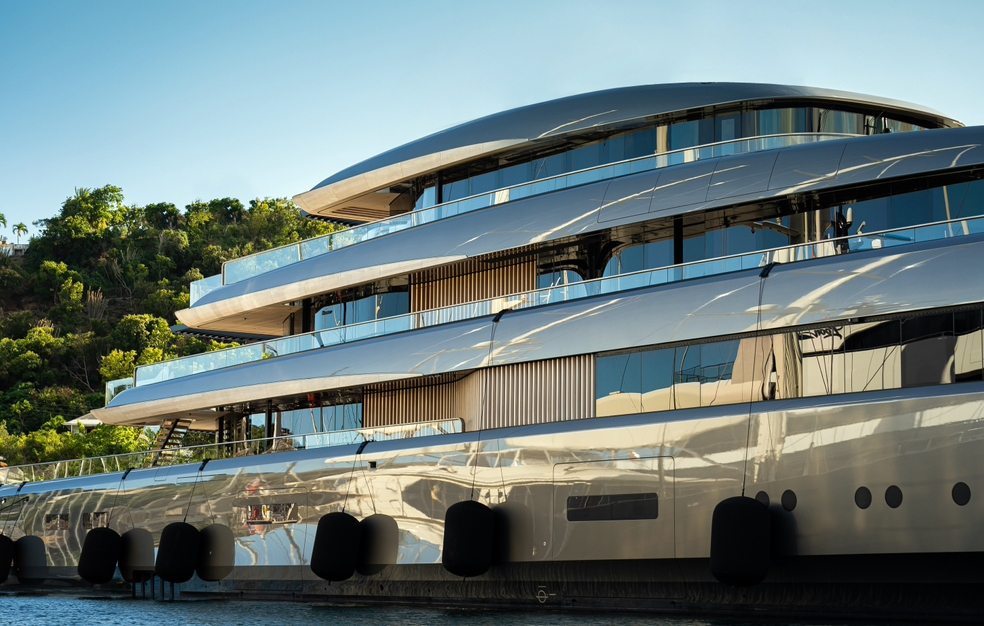
- Blog
-
by Admin
From 2025 onwards, the yacht-buying scene has undergone significant changes due to shifting buyer preferences, emerging technologies, growing environmental concerns, and evolving market trends. These changes have led to an experience-based approach to buying yachts, which was not the case earlier when it was seen as an investment in its own right.
Market Dynamics and Price Effects
The costs of yachts in 2025 are at their highest because of their size, age, and technical sophistication. Sometimes, only adding 10 feet to the length of a yacht may quadruple its worth because of the extra materials, technical work, and technological equipment on board. The purchasers must consider concerns such as maintenance, insurance, crew pay, and improvements (which account for 10-20% of the yacht’s value every year), in addition to the purchase price. Overall, the market has stabilised following an unusual surge during the pandemic. New sales have at least slowed down, which means that buyers may discover better deals in a balanced market if they are aware of regional price disparities and patterns.
Sustainable and Eco-Friendly Yachts
As people become more aware of the environment, they are more likely to seek out yachts that feature hybrid propulsion, solar panels, and eco-friendly materials. Eco-friendly yachts are no longer a choice for people seeking a lavish lifestyle; they are becoming an operational necessity as emissions limits evolve globally and owners desire boats that reflect their values. This situation is already hurting resale prices as sustainable boats with reduced emissions attract a higher price in the marketplace.
Why Explorer Yachts and Catamarans Are So Popular
Cultivating an interest in explorer yachts—rugged, long-range boats meant for off-grid expeditions in far-flung places such as the Arctic or Galápagos—has grown more fashionable. With stronger hulls, better stabilisation, and extended autonomy, these boats appeal to owners yearning for adventure and exploration. Conceivably, huge catamarans have gained immense favour these days owing to their spaciousness, shallow draft, and luxury, thus indicating customers’ desires for flexible and pleasant cruising possibilities.
Customisation and Semi-Custom Builds
Although full-custom yachts stand as the ultimate in luxury, demand has led more customers toward semi-customs, which offer a degree of customisation at a comparatively cheaper cost and quicker delivery time. This is particularly true for bigger yachts, 76m and beyond, where semi-custom designs have made great progress. Therefore, customers skate the narrow line between distinctive and inexpensive, with reduced waiting time, an indicator of practicality in boat ownership.
Integration of Advanced Technology and Smart Yachts
For the year 2025, sophisticated technology is in trend for boat purchases. Yachts nowadays are outfitted with integrated smart technologies for navigation, energy management, and entertainment. Automation and AI-powered controls boosted the efficacy and convenience of usage, making sailboats intuitive and integrated. The purchasers want their residences to serve as mobile luxury homes with a focus on comfort, privacy, and internet connection.
Yacht Ownership As a Lifestyle Investment
Increasingly, boats are viewed as lifestyle investments rather than mere luxury toys. Buyers match their purchases with personal values and major ideals, selecting boats that encourage health, adventure, seclusion, and business networking. Custom facilities, such as spas, exercise suites, hybrid office spaces, and even helipads, are soon becoming the standard for boosting the yacht’s usability and adapting it to meet the owner’s lifestyle.
Increasing Adoption of Fractional Ownership
By eliminating obstacles to ownership entry and spreading the financial burden, the fractional ownership model is gaining acceptance. This approach allows various stakeholders to benefit from and share the ownership expenses of a boat, which may include personal use or charter revenue. Brokerage businesses handle all arrangements, including legal ramifications, scheduling, and management, therefore promoting access points for the new investors.
Market Growth and Economic Factors
The yacht industry is booming with the growth of high-net-worth individuals and money spent on luxury recreation, with possibilities of government support for tourism. The yacht market is expected to grow from USD 9.48 billion in 2025 to USD 11 billion by 2029. These are the unpredictable new fronts that will be created to fuel the market by technological advancements: fuel cell technology, artificial intelligence, and product partnerships.
Conclusion
So, the yacht-buying scenario of 2025 will presuppose tremendous knowledge of a market driven by sustainability, technology, lifestyle agendas, and creative modes of ownership. Today, a yacht buyer has to consider the upfront expenses and the similar ones with maintenance, customisation, and fitting of personal values and experiences to the lifetime of the yacht. Increasing interest in exploratory yachts, catamarans, and semi-customs drives the trend toward functionalism and adaptability, while intelligent technology and eco-friendly design propel the luxury yachting industry into the future.
